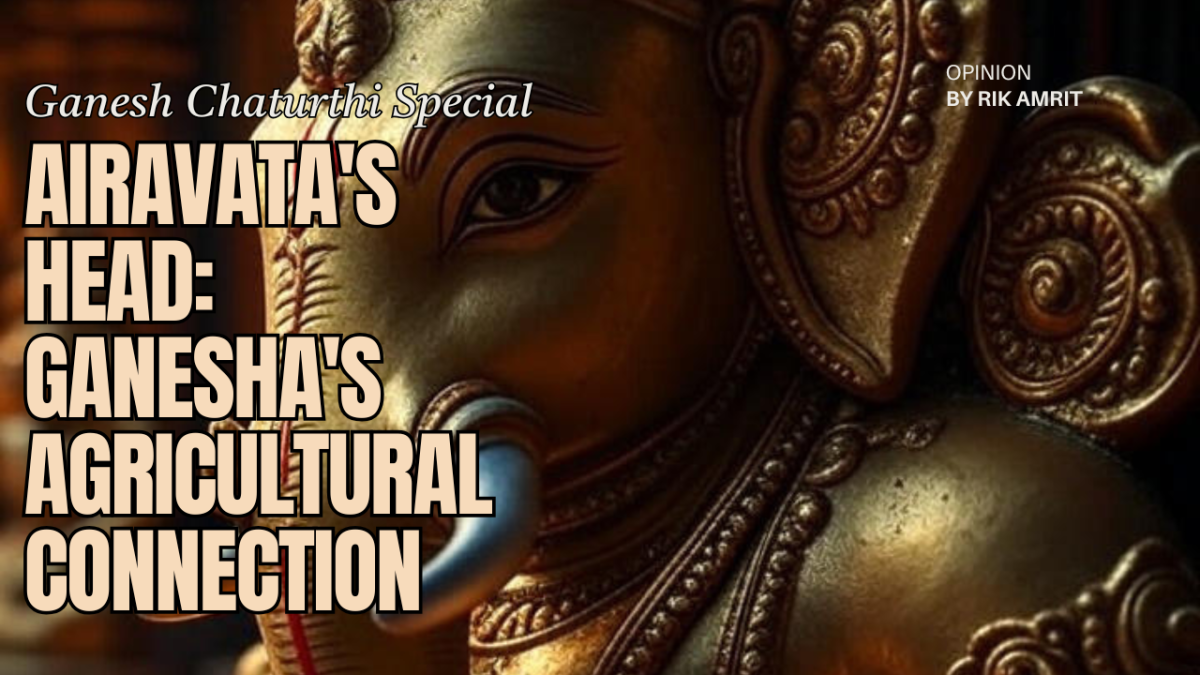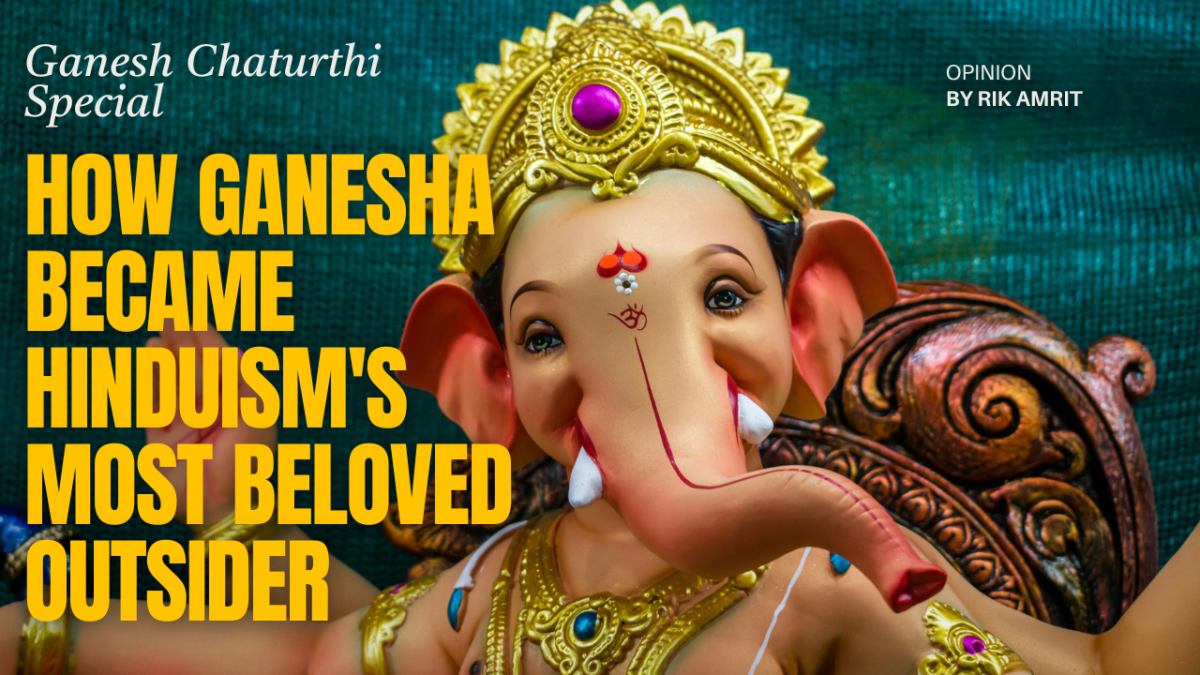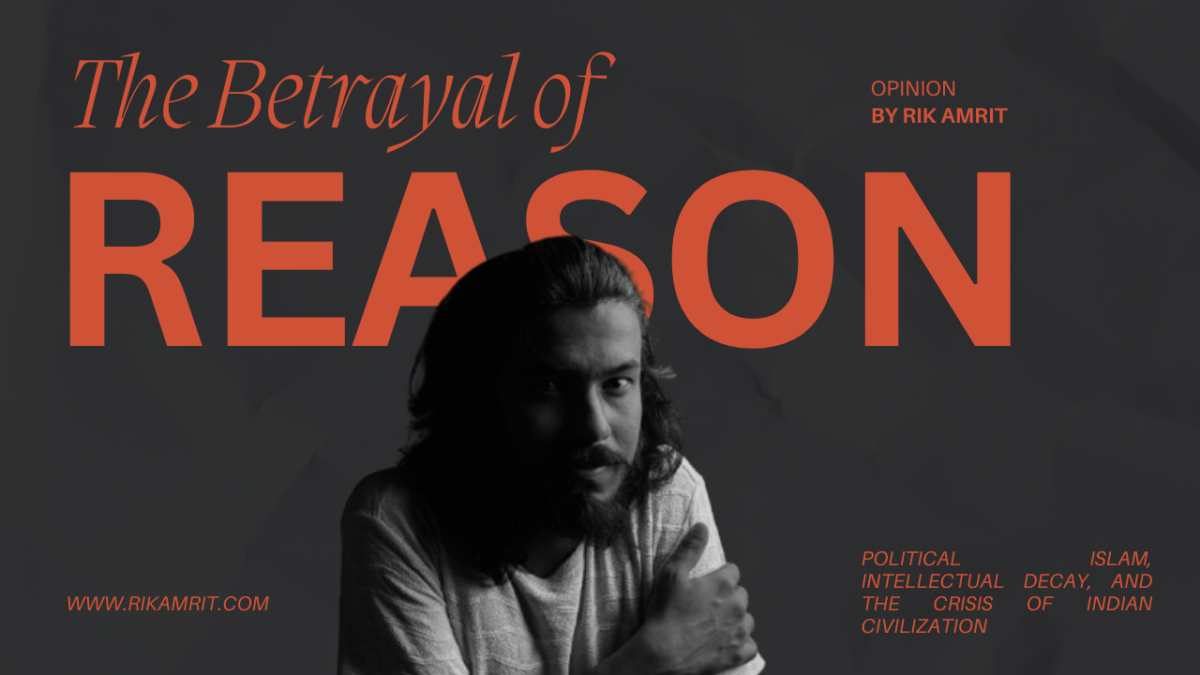Krishna is also used in the sense of "karshate iti Krishna"—meaning one who attracts. In Yoga philosophy, he is the presiding deity of the Ajna chakra. He attracts and pulls up Arjuna, who is stuck in the Manipura chakra. This is the essence of the Gita in Yoga philosophy.
Dividing life into two distinct perspectives is a natural characteristic of any religious philosophy. If we look at examples like Gautama Buddha, Mahavira, or even the Dashanami tradition of theistic renunciation, we notice that they are not content with life's reality; rather, their truth speaks of another world. This life is sorrowful, this world is maya, this is illusory. However, in India's largely life-renouncing philosophical history, the character of Sri Krishna appears as an exception in the eyes of historians. Whether in the Mahabharata or the Srimad Bhagavatam, breaking traditional and conventional ideas is his work. The one who unexpectedly shows the audacity to repeatedly challenge all social rules and norms, who acts contrary to them—him we accept in history as the complete avatar (Purnavatar). In this context, it is particularly noteworthy that the current political rulers want to establish Sri Rama as an ideal in society, but he lacks recognition as a complete avatar. He is partial (khanda). The concept of avatars, of course, doesn't hold much value for those of us who believe in factual history, whose lives contain less devotion, yet there is no room for doubt that as historical characters or as humans, their work and its evaluation can transform the mental state of the sympathetic and the aesthetically sensitive.
We know Rama as the embodiment of dignity—Maryada Purushottama—while Krishna is the embodiment of divine play—Lila Purushottama. As Purushottama, Sri Vishnu is mentioned. If we take examples from the Purusha Sukta of the Rig Veda, all mental clouds regarding the concept of the Supreme Person clear away. Moreover, in the fifteenth chapter of the Srimad Bhagavad Gita, Krishna himself introduces himself as "I am that Purushottama." It goes without saying that this "I" is not the individual self, but consciousness in the form of "I"—what Rabindranath called the "greater I." In the Ramatapini Upanishad, Sri Rama is mentioned as the Supreme Person, and in the Vishnu Sahasranama, Vishnu is mentioned as Purushottama. Although these are later compositions, it's better not to consider them as primary or secondary sources for citation.
Now, as an avatar of Vishnu, Rama's limit is dignity. While following dharma, he will naturally never transgress the boundaries of propriety. This very characteristic trait makes Rama quite predictable. In particular events, we can anticipate what Rama's reaction might be. This is why even the interpolated events of the Uttara Kanda appear quite logical to us. Who knows, perhaps this is why there are more than two hundred versions of the Ramayana in the world alone (incidentally, we have taken Valmiki's Ramayana as our subject in today's discussion).
This doesn't apply to Krishna. Like Rama, he too is committed to establishing dharma, but he has no boundaries. To him, everything is play—what we identify as lila. He doesn't have Rama's emotional turmoil. We see Rama as extremely emotional in all relationships—father-son, brother-husband—but when Krishna first speaks with his birth parents at the age of thirteen or fourteen, we see no such emotional upheaval in him. There's not even an example of him becoming emotional about Nanda and Yashoda. Similarly, we don't see any emotion after Abhimanyu's death. Rather, we find examples of him distancing himself from loved ones for their unrighteous behavior in the Mausala Parva.
Dr. S.L. Bhyrappa, in his novel "Parva," has Vidura say something beautiful to Dhritarashtra, which translates roughly as: "Your understanding of Krishna is completely wrong. He is such a person that if the Pandavas were to die in the battlefield, he would make either Kunti or Draupadi queen and have them rule the kingdom." As an actor, when I sit down to analyze Krishna's character, I feel something similar.
One common meaning of the word Krishna is black, darkness. I don't know if the poet of the Mahabharata used this name as a symbol of the mystery of Krishna's character. The poet's own name is also Krishna—Krishna Dvaipayana Vyasa. Vasudeva Krishna received the teachings of Vedanta from Krishna Dvaipayana Vyasa himself. In this sense, the philosophical disagreement between Bhishma and Vyasa in the Mahabharata is also resolved when Bhishma addresses Krishna as "Narayana" through his words. Krishna is also used in the sense of "karshate iti Krishna"—meaning one who attracts. In Yoga philosophy, he is the presiding deity of the Ajna chakra. He attracts and pulls up Arjuna, who is stuck in the Manipura chakra. This is the essence of the Gita in Yoga philosophy.
Rama was born during Uttarayana, in daylight, in spring season, during Shukla paksha, in Chaitra month. Krishna was born during Dakshinayana, at midnight, during the monsoon of Bhadra month, in Krishna paksha. Rama's arrival as the eldest son of the dynasty, with the inheritance of the kingdom on his head, was a celebration for the kingdom's inhabitants. Krishna is Devaki's youngest son, born in prison with the fear of death hanging over him. That night was stormy. That night was terrifying for the people of Mathura.
The differences in their upbringing are also quite noteworthy. What lack did Rama have in the abundance of the royal palace? In Krishna's case, want itself seems to be destiny. The two are so contradictory. After the war in the Ramayana, Rama can feel proud of his victory in war; he has the opportunity for that. Yet after the Kurukshetra war, Krishna receives a curse on his forehead—Gandhari's curse. The Purushottama who will be born bearing a curse (Yayati's curse on Yadu and his lineage) will also have his death determined by a curse—by a simple hunter's arrow. Septic? This is your God! Your complete avatar!
So what makes him complete? The answer to this question perhaps brings up one word: "detachment" (vairagya). Which Rama lacks. Dismissing life's hundred obstacles, troubles, and all possibilities of danger, he can dance wildly. He dances on the hood of the serpent Kaliya, he dances in the arrangement of Rasa with the gopis. Accepting all the dualities of the mundane, his dance becomes extraordinary. Such dance is not expected from other men in history. Buddha doesn't dance. Neither does Mahavira. Acharya Shankara? He doesn't either! Have we ever seen a smiling picture of Jesus Christ in any artist's imagination? I don't recall. This dance, this play, is his lila.
In the Gita, Krishna thus seems to repeatedly remind Arjuna that birth or death is nothing more than entrance and exit on a stage. We find Rama as an ideal character in the Ramayana; in the Mahabharata or Srimad Bhagavatam, Krishna is there as an actor. While Shiva is Nataraja in the spiritual realm, in the material world, in the cosmic drama, Krishna alone is Natabara—the supreme actor.




Comments (0)
Rate this Article
How do you feel about this article?
Comments (0)
No comments yet
Be the first to share your thoughts!
Join the Discussion